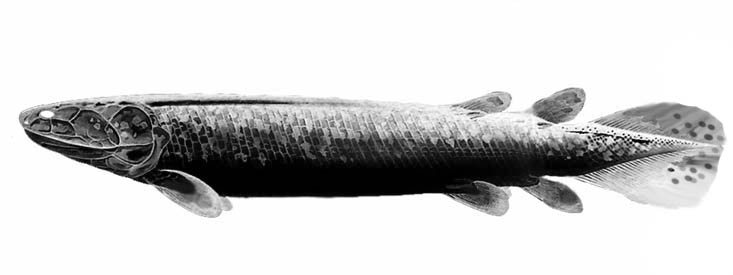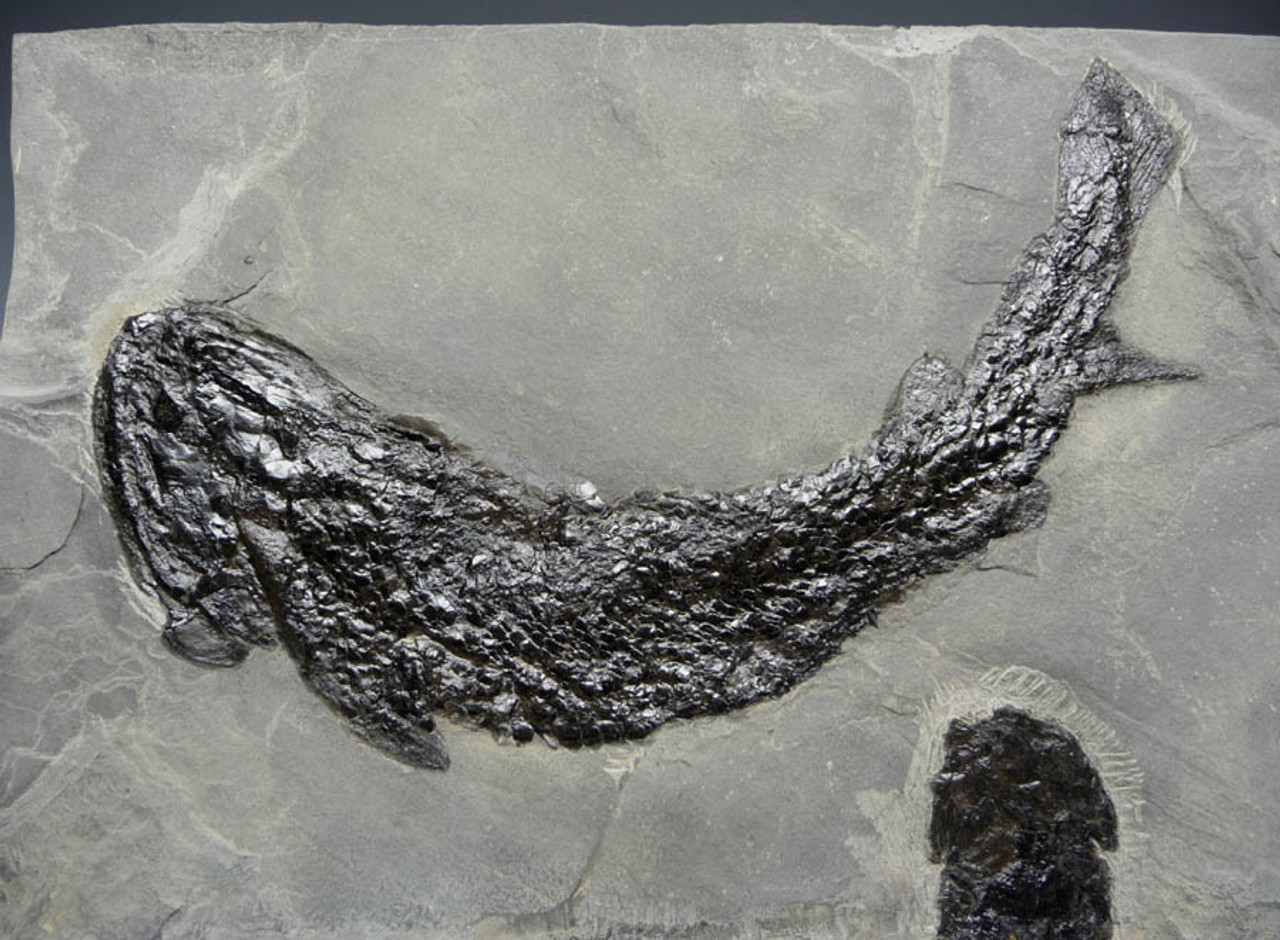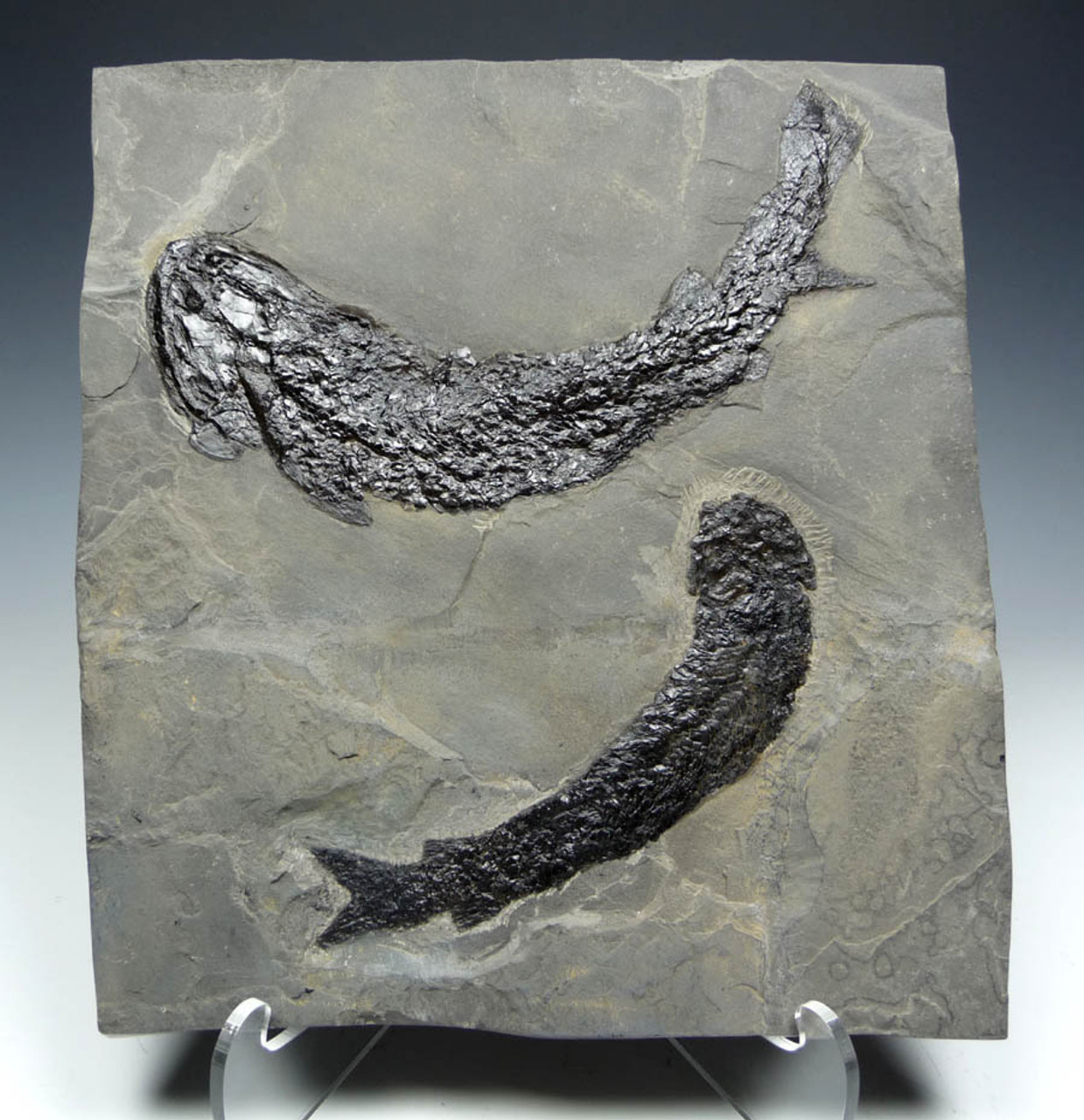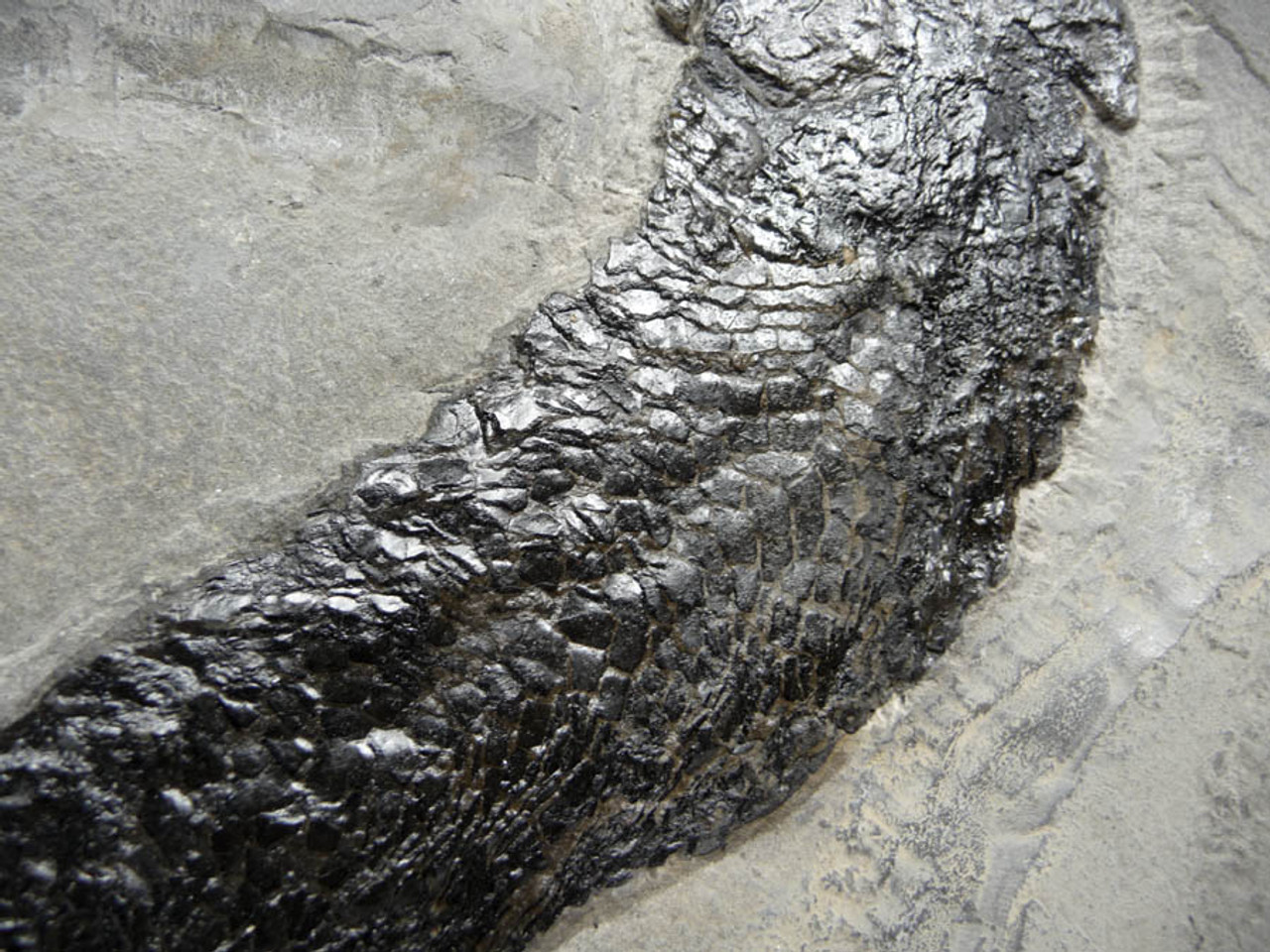Product Description
For the ultimate in a scientifically important as well as a magnificently rare fish fossil, this is a large, supreme Devonian fish fossil featuring TWO associated types of classic Devonian species found in this deposit! For a museum exhibit this fossil would be of special importance because the preserved anatomy on this specimen is very rare. The lungfish especially, has a magnificently intact head with all the heavy bone plate armor still articulated. These fish are perfect educational examples of the armored nature of the earliest known fishes! The most impressive and the rarest of the three is the very large and well-preserved lungfish, Gyroptychius agassizi. Also beneath it on a lower layer of rock from the same block can be found an equally well-preserved, unusually large type of Devonian lungfish called Osteolepis. The rock slab is multi-layered with repair and varies in thickness up to approximately 2 inches thick. Color and contrast of the fossils is natural and very impressive when viewed in person. While we have seen several fine grade Gyroptychius fossils over the years, this is one of the finest to demonstrate the heavy armor of the head as this has a superbly preserved articulation of these plates. At a period in time when vertebrates were scarce on Earth and trilobites thrived in enormous varieties and numbers, these three fish of the Devonian graced a freshwater lake in the region that is now North Scotland. The Devonian Period is the first era on Earth of fish emerging in the fossil record and these three species are amongst those early fish species known. The Devonian Period is the first era on Earth of fish emerging in the fossil record.
This specimen comes from a very old collection. The Gyroptychius lungfish fossil is in the finest state of preservation with the Osteolepis being of average quality and with a "top downward looking" perspective. These lungfish were covered with armored plates in the head and heavy scales and this example shows that in truly museum-class perfection! The scale and armor plate detail on these fish must be seen to appreciate. EVEN THE DELICATE CAUDAL FIN AND THORACIC FINS ARE NATURAL AND WELL-PRESERVED. You can see the close-up images and make your own examinations. Many of these Devonian Scotland fish fossils are only partially present and the rest is recreated with black paint. When this is the case, you cannot see dramatic three dimensional scale detail like you see popping up off the rock on this specimen. Articulated across the body are jet black, intact scales still present in their unique diagonal pattern which is a classic trait for this fish. This specimen is rare not only for its stunning state of completeness and preservation, but for its size, as well. The limestone layers of North Scotland are amongst the world's most valuable and richest source for Devonian fish. The quarries consist of fossil-bearing layers of what have been known as the Old Red Sandstone Formation, studied since the early 19th century.
HISTORY
Gyroptychius agassizi was a predatory lungfish that lived almost 400 million years ago and is now extinct. Lungfish are air-breathing lobe-finned bony fish that had the capability to breathe air by the use of their modified air bladder consisting of multiple chambers. They possessed odd large ridged toothplates designed to crush as much as chew their prey. Gyroptychius had a long, slender body with a shallow head and small eyes. Arranged in diagonal rows were thick rhombic scales made up of a cosmine layer and a thin shiny ganoine layer. These primitive fish also possessed a bizarre rhomboid-shaped caudal fin.
The Old Red Sandstone layers of Northern Scotland are one of three of the world's most scientifically important and richest deposits yielding fossil fish from the Devonian. The other two sites are at Canowindra in New South Wales and Miguasha in Quebec. A wide variety of freshwater fish can be found in these layers in Scotland from a time when the very first four-limbed vertebrates were evolving. The Achanarras beds, named after the quarry where they were first discovered, can be found in the layers that were laid down in Lake Orcadie during the Devonian period, 380 million years ago. Achanarras Quarry is situated at the top of a hill and is not very large. Since the quarry is now closed, the main central portion is flooded and inaccessible. Many years ago, it was worked for the laminated limestone which was split for roofing slates. The site is littered with a vast amount of slabs. Whole fish are rare and easily broken when found. These fossil beds have been studied since the early 19th century, most notably by the stonemason Hugh Miller. To this day, scientists are extracting fossils from this now closed and protected quarry. These fossils are still providing new discoveries and information on Earth's first fish and other animals unique to this area. Fourteen types of fish have been found in this quarry alone!

 US DOLLAR
US DOLLAR
 EURO
EURO
 AUSTRALIAN DOLLAR
AUSTRALIAN DOLLAR
 CANADIAN DOLLAR
CANADIAN DOLLAR
 POUND STERLING
POUND STERLING
















